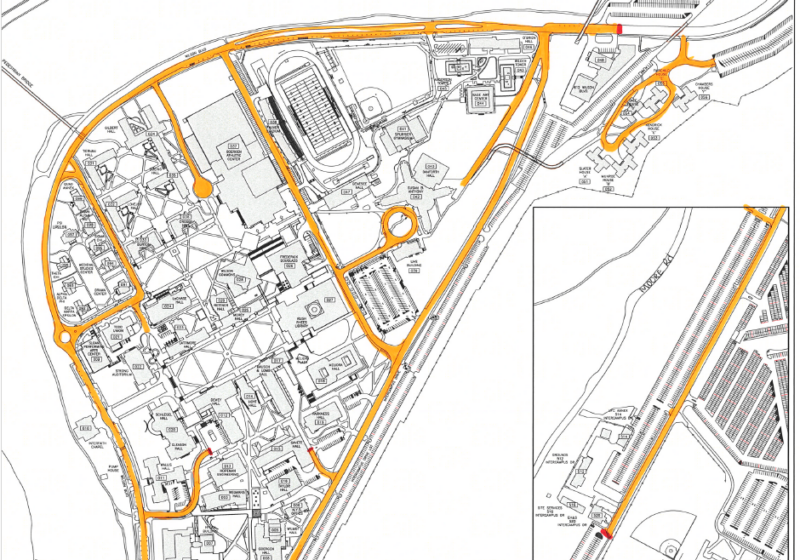The end of the semester marks an important milestone for the Medical Emergency Response Team as this was their first full semester using a vehicle as part of their operations. However, it has also been a particularly busy year for them with the amount of calls increasing from last year.
MERT responded to 282 calls in 2006 and at the time of publication, with almost three weeks remaining in the semester, they have already responded to 342 calls in this calendar year. The breakdown of the reasons MERT was called also differs in 2007 in comparison to 2006. In 2006 the top two types of calls MERT responded to were traumatic injury, making up 26 percent of the call volume, and intoxication, making up 21 percent. In 2007 the numbers virtually switched with intoxication making up 27 percent of the call volume and traumatic injury making up 21 percent.
According to Director of UR Security Walter Mauldin, there are typically two spikes in the amount of calls received over the course of the year – one in April around the time of Dandelion Day and one in September.
“This semester, however, there were actually two spikes – one in September and one in November,” Mauldin said. “In September, we had a lot of situations with underage drinkers, freshman mostly, that we were called to, so September was a big month. November is up this year also.”
One concern associated with increased calls to MERT due to intoxication is the amount of transports of students to the Strong Memorial Hospital Emergency Department. Admittedly, transported students make up a very small portion of the enormous volume of people that go through the Strong Emergency Department every year. However, according to Mauldin, many would still like to see a decrease in the amount of transports necessary. One way to decrease transports to Strong would be to bring intoxicated students to another location.
“If there is an alternate location, like the new University Health Service building, that could be an option,” Mauldin said. “There was a River Campus-based UHS operation that had a kind of boarding plan when I first came to Rochester. Part of the reason of its closure was not too few students, but too many students. Whether the new UHS building offers that additional option, I don’t know.”
According to Director of Operations of River Campus MERT Daniel Nassau, part of the increase in calls could be due to the increased visibility MERT has enjoyed since installing their vehicle as part of the operations.
“Because we have the vehicle we are a lot more visible on campus,” Nassau said. “We used to be more behind the scenes, but now a lot more people know there is a service through UR Security. For example, we have received a lot more calls from faculty and graduate students as a result.”
The MERT vehicle first arrived in November of 2006. In March of 2007 the light bar and the decals were put in place and the vehicle was first put into use one month later around the time of Dandelion Day. Over the summer the inside of the vehicle was completely outfitted – the cabinetry, the shoreline and the kill-switch feature, which allows the car to run without keys, were all put in place. All of the costs were covered by three contributors. The basic cost of the vehicle was supported by the College, a lot of the medical-related support in the vehicle was covered by UHS and the additional emergency equipment and the ongoing maintenance, insurance and oversight continues to be provided by Security.
At the beginning of this semester, with the vehicle completed, MERT integrated the vehicle into its full operations. The new operating procedure follows that from 8 p.m. to 8 a.m., the hours during which MERT receives the bulk of their cars, there is a Crew Chief assigned to the vehicle and everywhere he or she goes the vehicle goes as well. They sleep in the MERT bunk room in Tiernan Hall, right across the street from where the vehicle is parked, and the rest of the crew can either stay with the vehicle or respond on foot. In practice, most of the crew stays with the vehicle.
The vehicle contains everything a basic life support ambulance carries in addition to epinephrine, albuterol and aspirin. It also has backboards, pediatric equipment, a professional suction unit and more splinting devices then they were able to carry on foot.
According to Nassau, MERT has been able to reduce response time. He estimates that their response time used to be around six minutes and is now closer to three.
“Implementing the vehicle has surely improved our service,” Nassau said. “We’ve only missed one out of 342 calls this semester. In terms of getting to calls, we are quicker and it has expanded the equipment we can carry so we are more effective in the treatment we give to patients. We also can transport the whole crew together which is important because the Crew Chief can respond to the call first and he or she is the highest level care-giver.”
Mauldin agreed with Nassau’s assessment.
“The vehicle has been a positive contribution,” he said. “I think that it has improved their overall readiness and on occasion the response time or the degree of response by the first responders.”
In terms of the increased amount of calls MERT has seen this semester, Nassau hopes that their increased visibility has allowed them to respond to everyone who has potentially needed their services.
“We’d rather do 100 intoxication calls and make sure everyone is safe at the end of the night than do 10 intoxication calls and miss people that might not be safe,” he said.
Jarrett is a member of the class of 2009.




